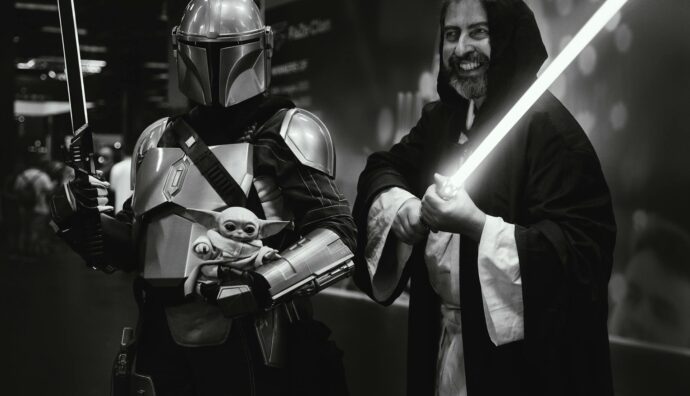Yes, it’s true: that alien O Sensei, green but still with almond-shaped eyes who speaks with verbs in the infinitive form, said:
“Do. Or do not. There is no try”.
Unfortunately (?) Yoda Sensei lives in a future that only exists in the Star Wars movies. His teachings are based on true principles: you can’t always just try to do something, at a certain point you have to make a decision.
Nature knows that, it writes in the instinct of a sparrow the moment in which it must dare to dive from the nest and become capable of flying.
The human being is wonderfully simple, perhaps more than a sparrow; yet it is incredibly complex, because in addition to instinct, a person has a will, which does not always accord with nature.
The “trial lessons” at the Dojo are a good example of this phenomenon. And, simultaneously, they are a great challenge, both for those who teach during classes and for those students who cyclically find the tatami populated by new people. Those who “try”, in fact.
To date, we have seen several approaches in such situations.
There are those kind of classes we are used to label as “welcome” keiko, where practice is based a lot on perception, on principles. The rhythms are low but at the same time the psychodynamic part is kept high, giving back some awareness to the guys who are trying. In a short time you prove to yourself that you are capable of unbalancing a person; of knowing how to “take the other person’s point of view” and, for this reason, of knowing how to resolve a conflict, even if simulated. In short: that you have invested well those hours in which you came to the Dojo, just to try.
There are more marketing-oriented approaches: if you know something about the personal history of those who come to try, the keiko is modeled as if it were a grafting, a continuity with respect to the person’s trajectory. This happens, for example, when someone who has already practiced Aikido or some traditional Martial Art in the past comes to try.
Sometimes, however, the person is invited to stay within the teaching proposal that the teacher decides to give to the students that day. This happens when visitors come and try in that part of the year in which kyu and Dan tests are close and the group – even if no one will never say it officially – is not so enthusiastic about having to somehow level itself to include someone who, perhaps, won’t ever enroll to the course.
It sometimes happens that teachers use this method to dissuade a certain kind of users from attending. We’ve seen it in all sorts of ways: navy seal training offered to people who only wanted the introspective part and sloth training offered to people who wanted to “learn how to fight”.
So what?
God only knows how much a niche discipline, like Aikido is, needs numbers to aim for any future. It is a matter of sustainability and not only for those who are professional teachers.
However, economic sustainability must always be combined with environmental sustainability. Accepting everything and everyone is a bit like offering a free course: in the medium term not only does the course not take off but it implodes and then disappears.
In our community of practice, the Evolutionary Aikido Community, a very beautiful image is used: the Dojo is like a fire that all people can approach to warm themselves.
We believe that with that fire you can cook and offer dishes. Some standard, others customized.
After all, none of us has ever returned to all the diners and restaurants where, overall, we had a good time. But certainly none of us has ever returned, of our own free will, to those places where the chef and waiter imposed their choice on the order placed.
So, to use the restaurant metaphor, you certainly need a chef who knows how to cook and a waiter who knows how to read the customer’s needs. We need a clean room where the new customer feels welcomed. And, clearly, you need… the customer, who if he doesn’t know the restaurant exists, will hardly enter.
The Sensei is chef and waiter at the same time. Some will be capable of producing starred menus; but the world is full of small places that work well with simple but complete menus where it is difficult to find a free table.
The job of the chef and waiter is to keep a welcoming place. The group somehow attracts or repels a potential new practitioners at least as much as the menu. This is a detail that we often forget but it is, in our way of thinking, fundamental.
So, before expecting a guy who pays a visit to our Dojo, to make choices that require a clear understanding of the menu and the venue, everyone must make an effort to offer themselves – and therefore to anyone who enters our world – the best version of themselves.
Which is exactly the product that everyone ultimately wants to buy.
Disclaimer Picture by HIGHER VIBRATION from Pexels

